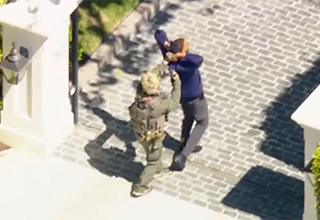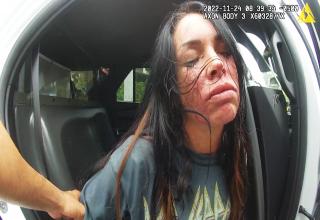Picture this. It’s a chilly March night. After an evening of fun at a pal’s house, you’re driving back home, excited to curl up into bed and get ready for the day ahead. Yet as you’re driving over a bridge, a typically uneventful part of your homeward commute, you notice something has gone terribly wrong — your car has wound up over the ledge, sinking into the water below.
BREAKING: Police audio has been released that captures dispatchers discussing with officers the approaching container ship and the subsequent collapse of the Francis Scott Key Bridge in Baltimore.
— Ed Krassenstein (@EdKrassen) March 27, 2024
In the audio, you can hear an officer trying his best to get the traffic stopped… pic.twitter.com/IFdi3kloJe
For several unlucky folks, this horrifying scenario turned into a reality when Baltimore’s Francis Scott Key Bridge collapsed early Tuesday morning after a cargo ship crashed into one of the structure’s support beams.
Although six people died in the ordeal, an incident like this doesn’t have to be fatal — just ask ER doctor, Darria Long Gillespie.
@therealdrdarria If you’ve ever driven over a bridge or past water and thought “what would i do if my car fell in”, then this post is for you. As an ER doctor, it’s my JOB to think of emergencies and how I’d respond - and my mission to help you do the same. Once your car hits the water, you have approximately ONE minute to get out. So, I talked with one of the leading experts in car submersion events, Gordon Giesbrecht (IG professorpopsicle), to find out EXACTLY what to do, to help save you and your family. “WHEN passengers had an appropriate response planned, exit could be accomplished quickly” Watch the video for the 4 steps. Plus,some myth-busting 1. Do NOT rely on glass-breakers. It takes precious time to FIND your glass-breaker, ANDd (2) many modern cars have side windows made with laminated glass (just like the windshield), and glass-breakers will NOT break that. 2. Electrical windows WILL open. The issue isn’t the electricity - it’s pressure. You just need to open the window before the water has reached ? - ½ of the way up (ideally before the water has even risen to the window level). 3. Some popular guidance says to “wait until the car has flooded with water, then open the door”. Do NOT do this, unless as last resort. 4. Go out the window - don’t try to open the door. The water pressure could make it slam back on you, AND this makes the car fill with water MUCH faster. 5. DO NOT DELAY. Do not do ANYTHING else first but SWOC. 6. Why the oldest child first? Let out the ones who need the least help first, so you can have both arms on the youngest. 7. Never get out of the car before your child - if the car suddenly fills with water and you’re out of it, you’d have a very difficult time getting back to it. But if you’re both inside and you’re holding the child, you can still swim out. Repeat SWOC to yourself. Burn it on your brain, in hopes you’ll NEVER EVER need it, and share it with other mamas out there. Video credit of sinking car: Gordon Giesbrecht #carsafety #emergency #emergencypreparedness #emergencymedicine #doctor #erdoctor #doctorsoftiktok ? original sound - TheRealDrDarria
“If your car falls into water, you have approximately one minute to get out safely,” she began her now-viral TikTok video posted shortly after the bridge collapse. So how can you make the most of that one minute before sinking to the river floor? Having a plan.
“When I take care of patients who survived vehicle submersions, it is because they knew what to do and did it immediately before they even had time for panic to set in,” she explained before likening a sinking car to a “leaky boat” that tips forward as it dives deeper into the water.
After realizing that you have to get the hell out of Dodge — quite literally, depending on your car — the first steps in making a safe escape are to remove your seatbelt and identify which window you plan on exiting from, according to Dr. Darria. Considering that the “second-row window stays above water longer” — and that window breakers aren’t always reliable — choosing to exit from the back seat isn’t a bad idea, especially if there are children in tow. Finally after maneuvering your way out of various restraints, climb out of the designated escape window, with the eldest children leaving first.
Considering this is a lot to remember — especially in a moment of panic — Dr. Darria suggested using the acronym SWOC, which stands for seatbelts, windows, out of restraints and children.
While we can only hope that we’ll never have to use these steps, they’re always good to have for a rainy day … or a chilly March evening.






4 Comments